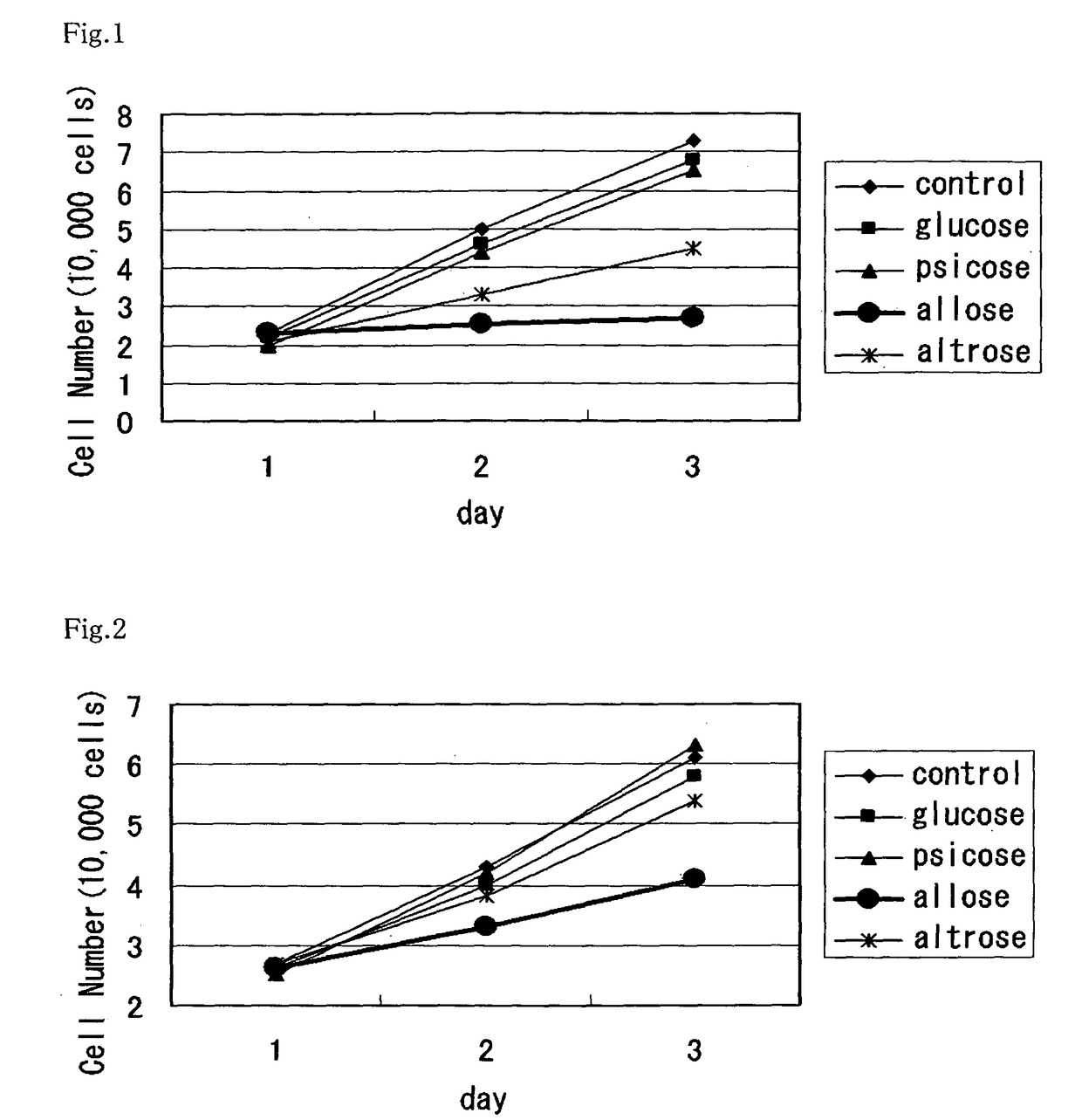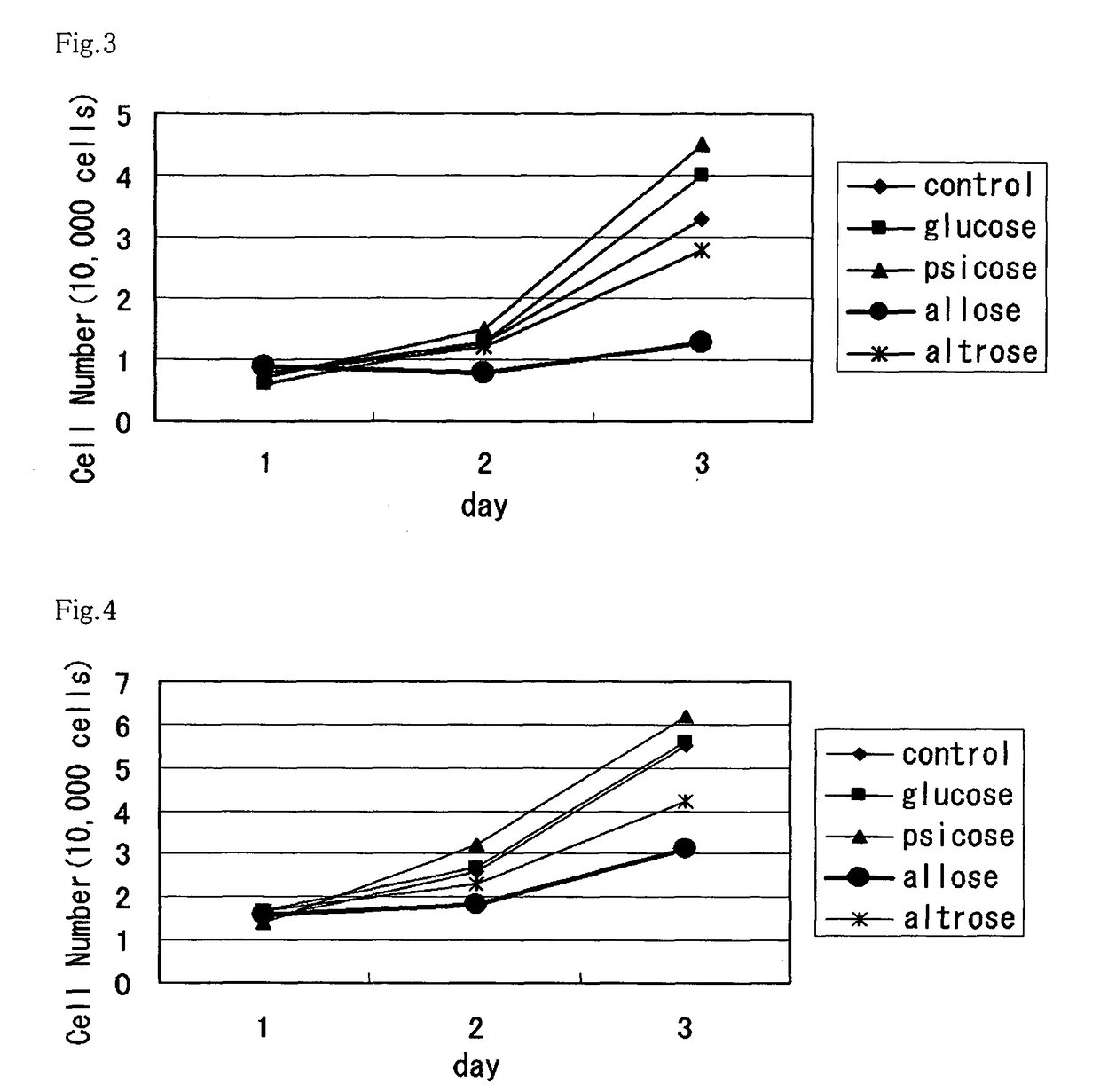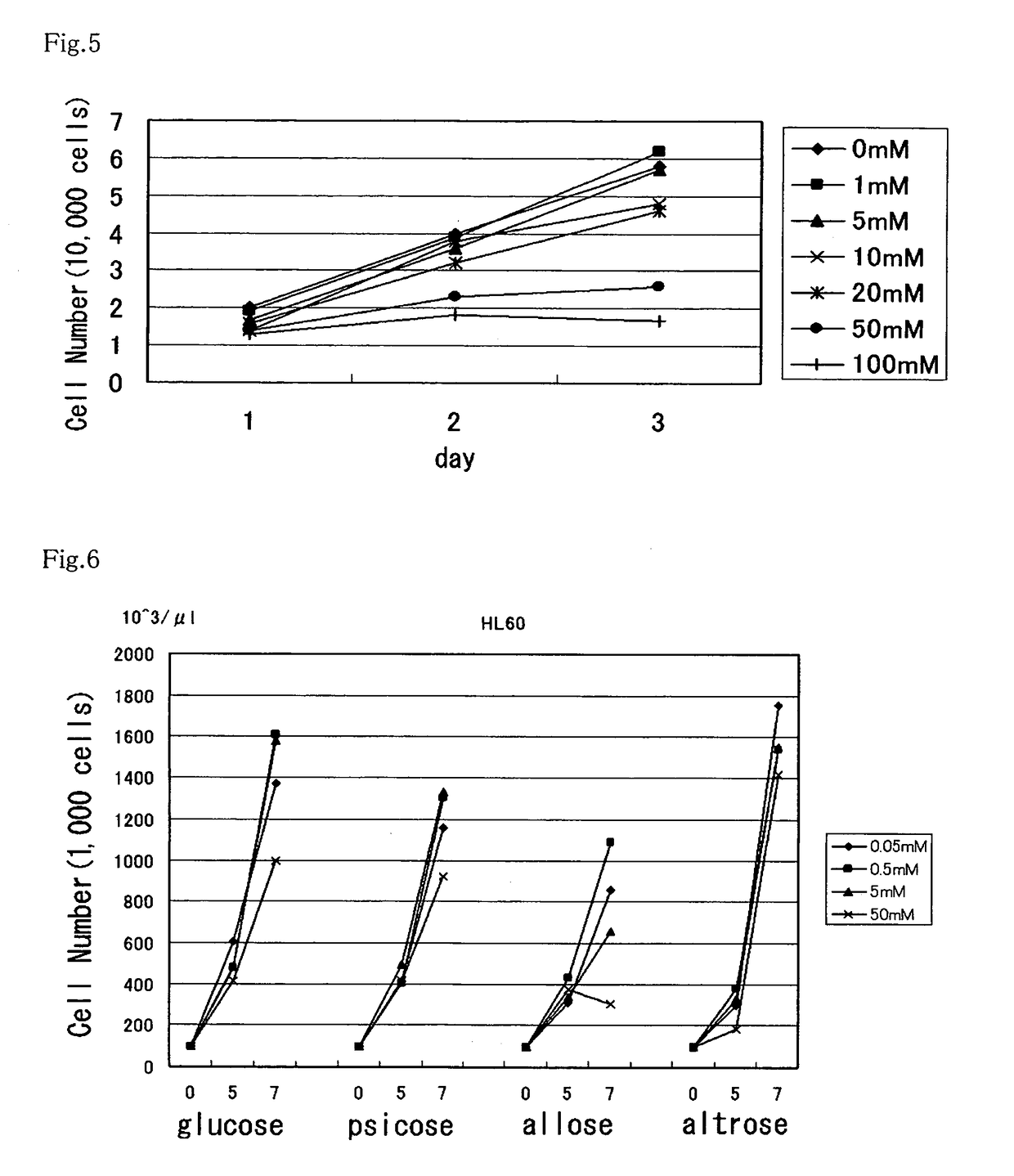Method of utilizing physiological activity of rare saccharide and composition containing rare saccharide
a technology which is applied in the field of utilizing the physiological activity of rare saccharide and composition containing rare saccharide, and can solve the problems of still being expensiv
- Summary
- Abstract
- Description
- Claims
- Application Information
AI Technical Summary
Benefits of technology
Problems solved by technology
Method used
Image
Examples
example 1
[0127](Influence of Rare Saccharide Upon Proliferation of Cultured Cells)
[0128]Various kinds of rare saccharides were added at a concentration of 50 mM to culture media under the following conditions, and an influence of each rare saccharide upon the progress of proliferation of cancer cell strains was examined.[0129](1) Target cells to which the rare saccharides were added: Hepatic cancer cells (HepG2), uterine cancer cells (He1a), ovary cancer cells (OVCAR3), and skin keratinocyte (HaCaT) were selected as target cells to which the rare saccharides were added.[0130](2) Rare saccharides added: In addition to D-allose, glucose and D-altros as rare saccharides belonging to ketose were added, as other comparative saccharides, to the addition target cells. Also, D-fructose was employed as a control.[0131](3) Experiment method: A number 3,000-5,000 of addition target cells per type were inoculated into a multi-well plastic dish (hereinafter referred to as a “well”) having 96 wells, and w...
example 2
[0139](Concentration Dependency of Cancer-Cell Proliferation Inhibitory Effect of D-allose)
[0140]In this Example 2, concentration dependency of the cancer-cell proliferation inhibitory effect of D-allose was examined.[0141](1) Experiment method: The ovary cancer cells (OVCAR3) were selected as target cells to which a rare saccharide was added, and D-allose as the saccharide was added at concentrations of 1 mM, 5 mM, 10 mM, 20 mM, 50 mM and 100 mM. The experimental conditions, such as the method of culturing the ovary cancer cells (OVCAR3) and the method of measuring the cell number (MTT method), were the same as those in Example 1.[0142](2) Experiment results: FIG. 5 shows changes over time in the number of the ovary cancer cells (OVCAR3) admined with D-allose at the respective concentrations. The cancer-cell proliferation inhibitory effect was first found at 10 mM and then gradually increased in the order of 20 mM, 50 mM and 100 mM. In other words, concentration dependency of the c...
example 3
[0143](Influence of Rare Saccharide Upon Proliferation of Blood-System Cancer Cell Strain)
[0144]This Example 3 is related to a cancer-cell proliferation inhibitory substance containing, as an active ingredient, alldose belong to the rare saccharides. Although various anti-tumor drugs and anticancer drugs are known, their side effects are problematic in the generalities of cases. Also, at present, consciousness and expectation are increased for drugs or foods (functional foods) targeted on prevention of diseases rather than drugs targeted on remedy of the diseases. In connection with the relationships between saccharides and cancers, there have hitherto been reported that an oligosaccharide acts to keep the intestine in order and therefore it is effective in relieving constipation for protection against a colon cancer. Further, there have recently been publicized reports indicating a cancer inhibitory effect of polysaccharides, such as agaricus, and discussing the relations between s...
PUM
| Property | Measurement | Unit |
|---|---|---|
| carbon number | aaaaa | aaaaa |
| melting point | aaaaa | aaaaa |
| concentration | aaaaa | aaaaa |
Abstract
Description
Claims
Application Information
 Login to View More
Login to View More - R&D
- Intellectual Property
- Life Sciences
- Materials
- Tech Scout
- Unparalleled Data Quality
- Higher Quality Content
- 60% Fewer Hallucinations
Browse by: Latest US Patents, China's latest patents, Technical Efficacy Thesaurus, Application Domain, Technology Topic, Popular Technical Reports.
© 2025 PatSnap. All rights reserved.Legal|Privacy policy|Modern Slavery Act Transparency Statement|Sitemap|About US| Contact US: help@patsnap.com



